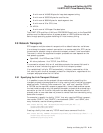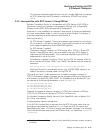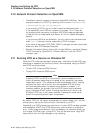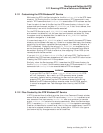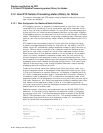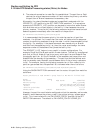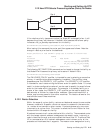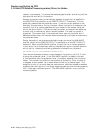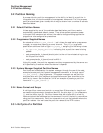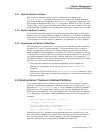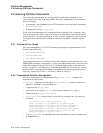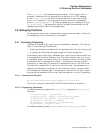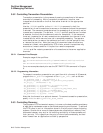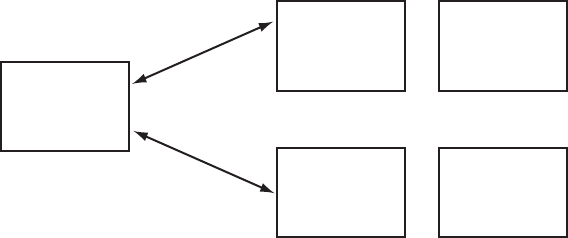
Starting and Setting Up RTR
2.12 How RTR Selects Processing-states (Roles) for Nodes
Router
Site A
Site B
Node-A1 Node-A2
Node-B1 Node-B2
If the relative priority (sequence number) for Node-A2 is changed to four it still
becomes the primary active server if Node-A1 fails because the failover policy
indicates a fail_to_standby requirement for this facility.
SET PARTITION test/PRIORITY_LIST=(Node-A1,Node-B1,Node-B2,Node-A2)
After issuing this command the router partition appears as follows. Note the
change in relative priorities for the backends.
Router partitions on node SILVER in group test at Tue Mar 23 13:29:41 1999
State: ACTIVE
Low bound: 0 High bound: 4294967295
Failover policy: fail_to_standby
Backends: node-a1,node-a2,node-b1,node-b2
States: pri_act,standby,sec_act,standby
Relative priorities: 1,4,2,3
Primary main: node-a1 Shadow main: node-b1
The following SET PARTITION command can be issued to change the facility so
that Node-B1 will become the primary active server if Node-A1 fails.
SET PARTITION test/FAILOVER_POLICY=shadow
The /FAILOVER_POLICY qualifier is intended for use in selecting a new active
primary in configurations where shadowing is enabled. This qualifier takes
precedence over the /PRIORITY_LIST qualifier. The /PRIORITY_LIST qualifier
is intended for use in determining the failover order for specific nodes. It is most
useful in cluster configurations where it can be used to specify the exact failover
order for the nodes within the cluster. For example, in a standby facility on a
cluster of four nodes, the /PRIORITY_LIST qualifier can be used to specify the
desired order of failover for those cluster members. Some machines within a
cluster may be more powerful than other machines. This feature allows for the
most efficient use of those machines.
2.12.2 Router Selection
Within the scope of a given facility, routers and backends connect to one another.
However, nodes with a specific role do not connect to nodes with the same role,
i.e., routers do not connect to other routers. Frontends choose only one router
to connect to at a given time. This router is called the Current Router for that
frontend within the scope of a facility.
A backend connects to all routers defined within a facility. The connected router
with the lowest network address is designated the master router. Internally, a
node is identified through a structure called the Kernel Net ID. The Kernel Net
ID is a concatenation of all network addresses a node is known as for all the
protocols and interfaces that it supports. The master router designation is only
Starting and Setting Up RTR 2–21



